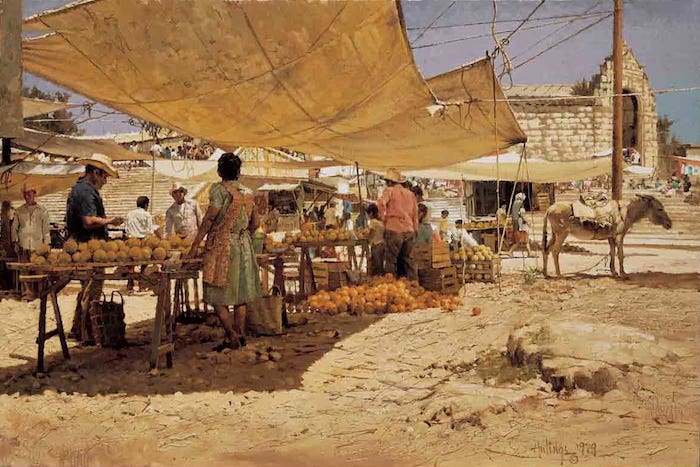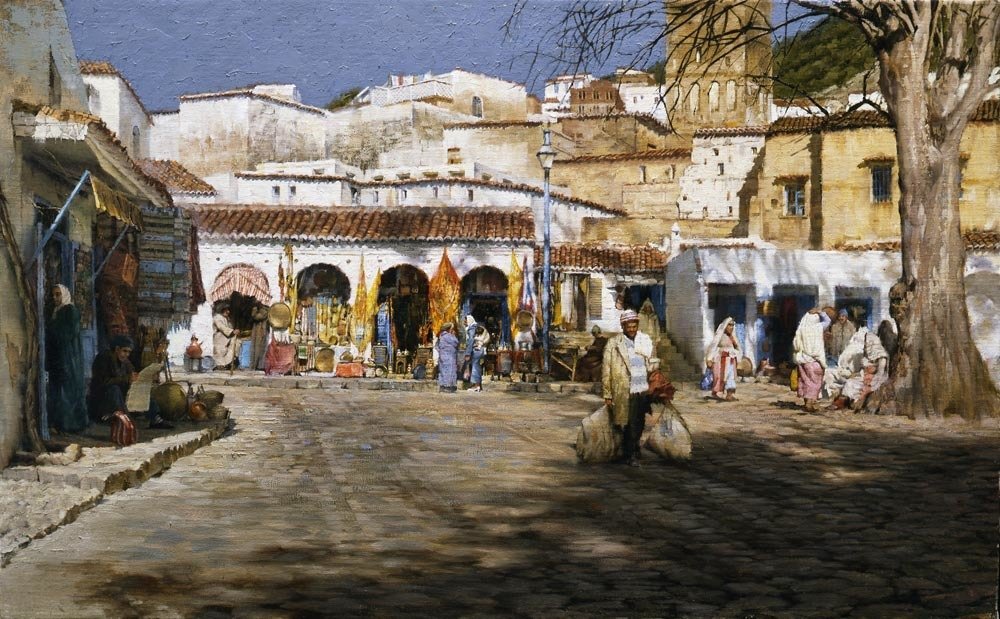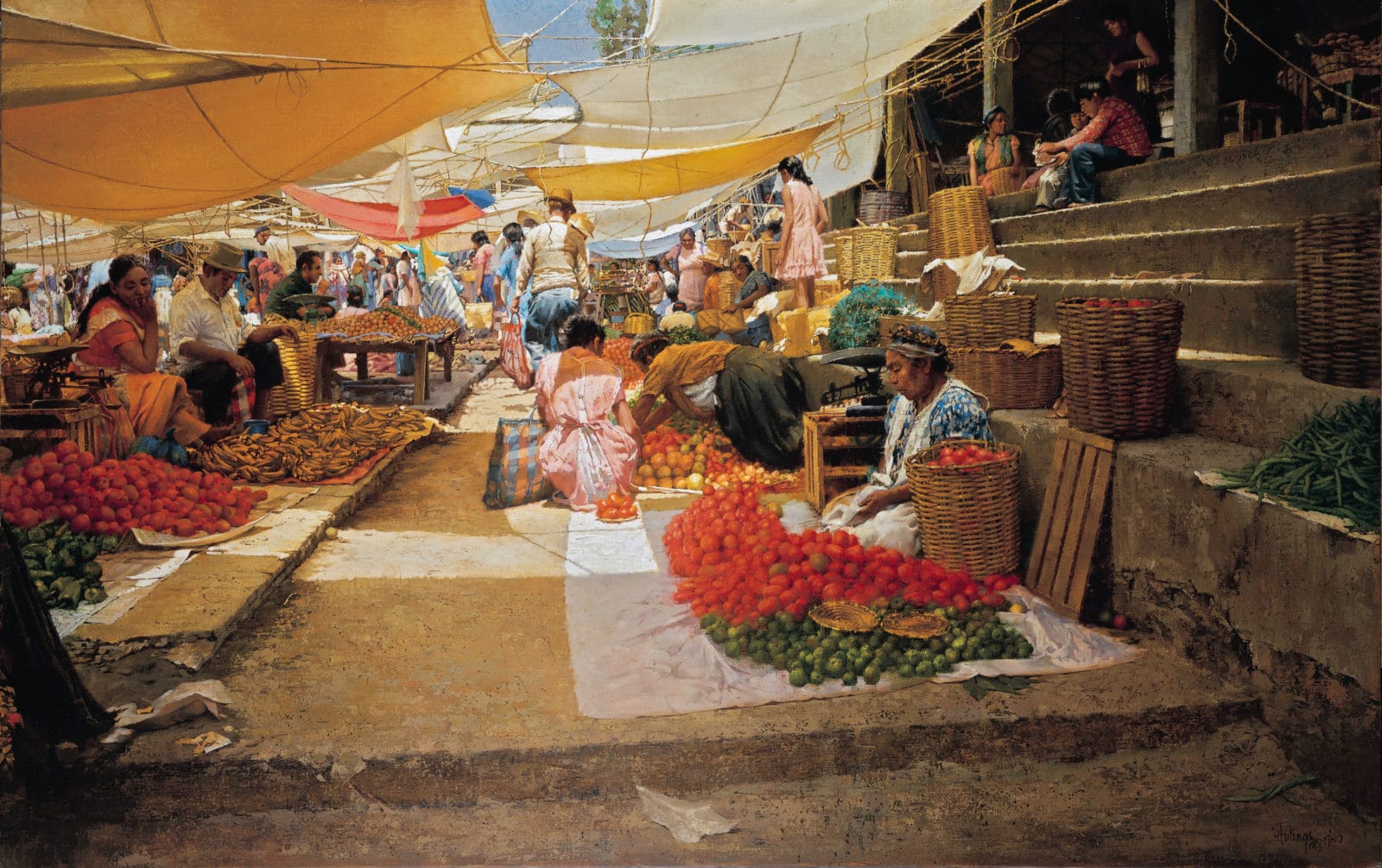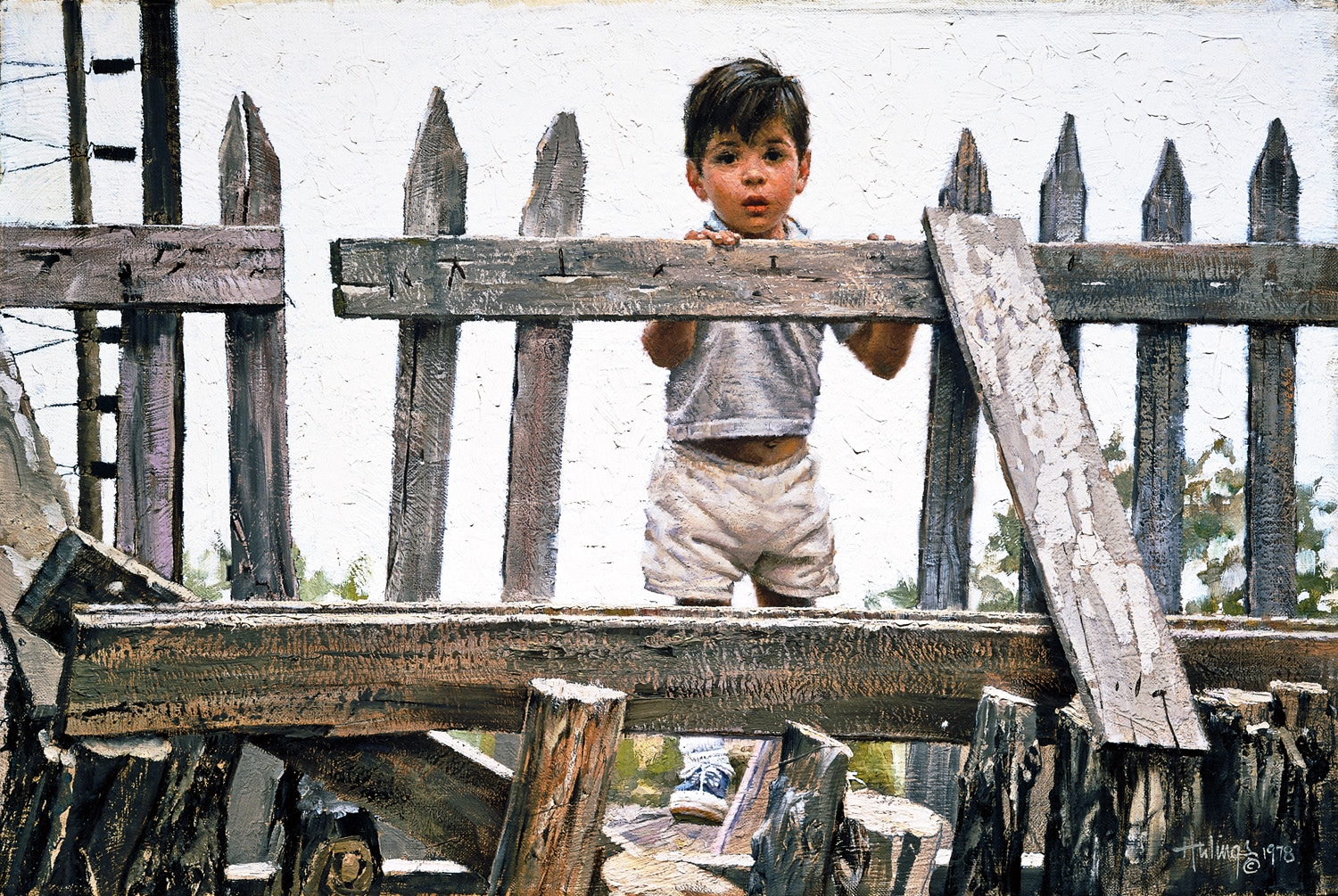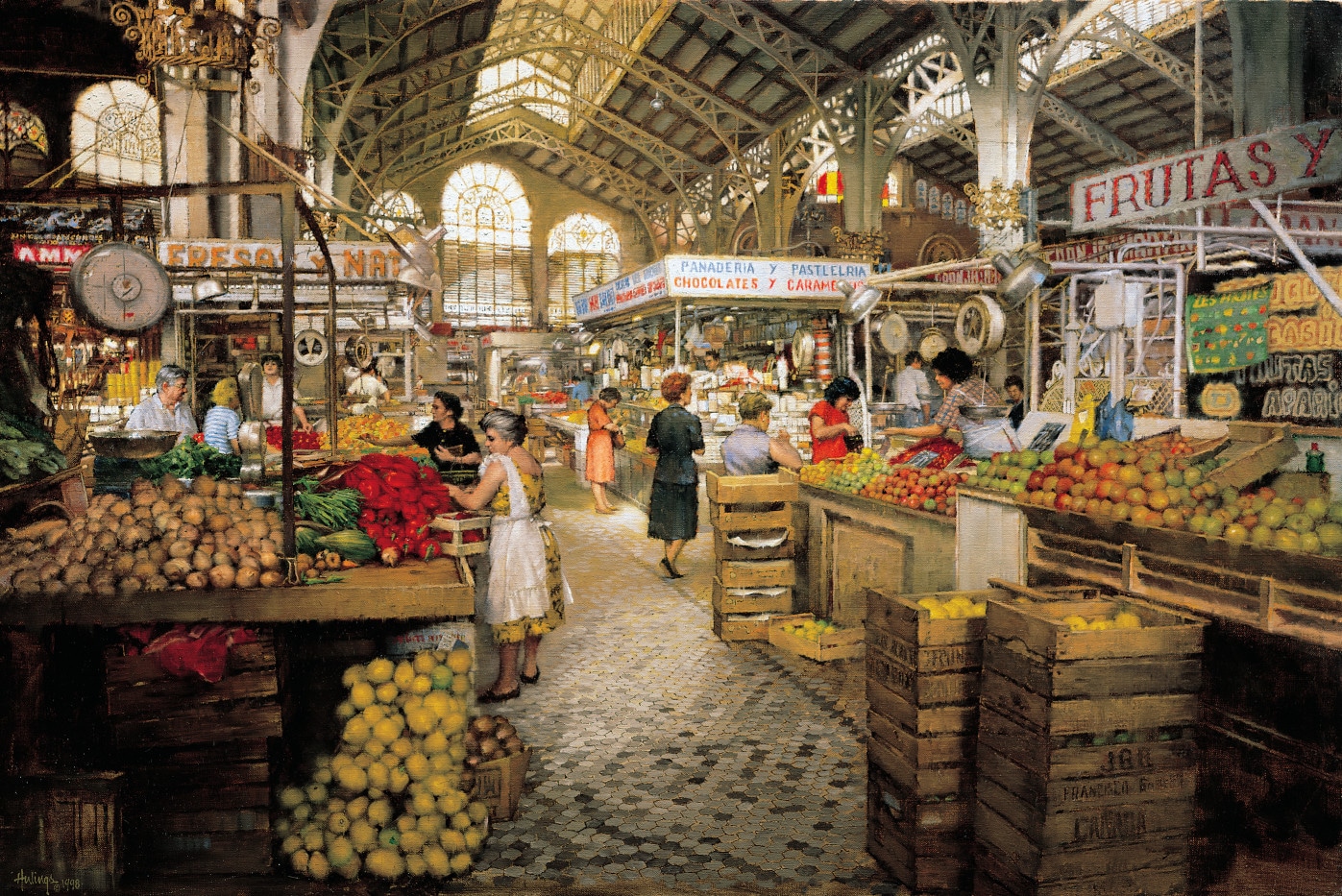“I must confess to an undying gratitude for tarpaulins. To the vendors who use them, they are protection from the glare and heat of the sun. To me, they are excellent ploys to be used in composing pictures.”—Clark Hulings
We’re delighted to introduce you to our writer-in-residence, James D. Balestrieri, who is working on a major monograph about Clark Hulings. James is an arts consultant and writer, specializing in catalogue research and writing on American art, estate and collections management and acquisitions, and marketing and communications for museums and auctions. His cross-disciplinary education includes an MA in English from Marquette University and an MFA in Playwriting from Carnegie-Mellon. He went on to teach English and Theater at Marquette and at University College of Wales, Aberystwyth—an old coastal town surrounded by mountains, mines, and forests, and boasting its own castle ruins—a place Hulings would have loved. James served as Director of J.N. Bartfield Galleries in New York for 20 years and has published over 150 feature essays and reviews in national arts publications.
Just as Hulings did plein air studies he called “sketches”—the artist’s equivalent of a yoga practice or workout—James will be sharing pages from his notebook where he’s developing the themes for the book. Thank you to the community of Hulings collectors who are already supporting this timely project!
Reading what Hulings wrote about tarpaulins—I’ll get to the quote in a minute—got me thinking about canvases and about this project I am embarking on. Writing a new book about Clark Hulings (he says, restraining his excitement) you go right for the big ideas, the ones that give rise to the masterpieces.
You cue the trumpet fanfare at the expense of the obvious, the foundations of all those paintings, the armature of the artist’s art.
Now, a tarp is a thing that works. So is a sail. So is an artist’s canvas. All three are stretched, tied off, anchored. The tarp and the sail bow to gravity and billow in the wind. The tarp—or awning—protects, shields, and contains. The sail moves the boat from A to B. Both have a job to do.
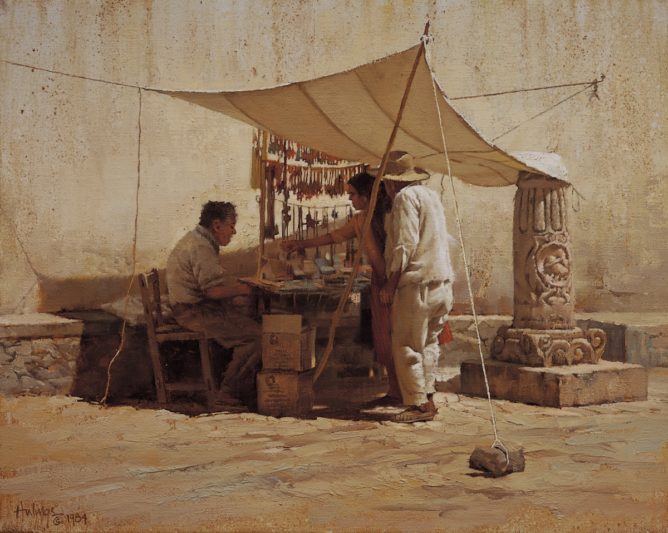
In a painting, conversely, the canvas is stretched until it cannot bow, until it cries out like a felon on the rack. It is taut, containing the painting, limiting it through its own limits. The colors applied to its surfaces reflect and refract light. But the sail and tarp are always themselves. Unless the canvas is the point of the artwork—take Lucio Fontana’s slashed canvases, for instance—the artist’s canvas serves the artist by disappearing beneath the painting.
Let me read you something from Hulings: “I must confess to an undying gratitude for tarpaulins. To the vendors who use them, they are protection from the glare and heat of the sun. To me, they are excellent ploys to be used in composing pictures.”
Hulings goes on to say that tarps can enliven negative space, guide the eye, and add color and light through their translucency.
In other words, tarpaulins are paintings within the paintings, utilitarian objects, that Hulings repurposes when he deploys them on his own canvases in a kind of meta-aesthetic upcycling.
Tarps, and their “canvas-ness,” also connect Hulings’s art to the work done by the farmers, the fruits—and vegetables, and flowers—of whose labors are displayed beneath these canvas tarps.
Clark Hulings saw himself as a working artist. He valued work and made the lives and labor of ordinary people his principal subject. Farmers harvest fruits, vegetables, flowers, from rural soil and arrange them under canvases in city and village squares; Hulings harvests images from this soil and these squares and arranges them on his canvases. His paintings are then arranged once again, displayed for the delectation of viewers’ and buyers’ eyes.

